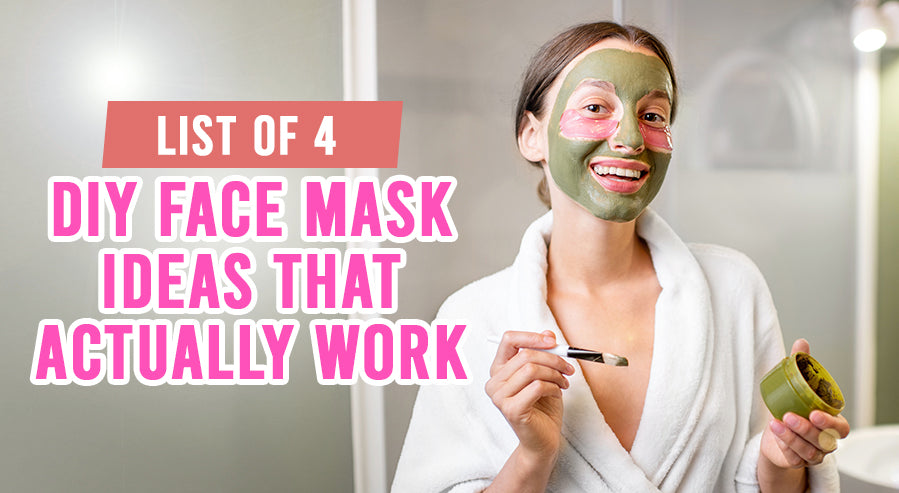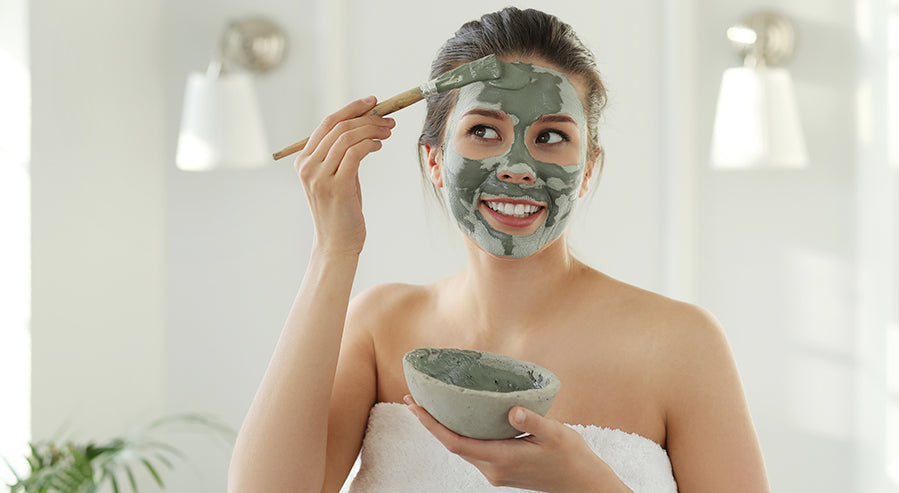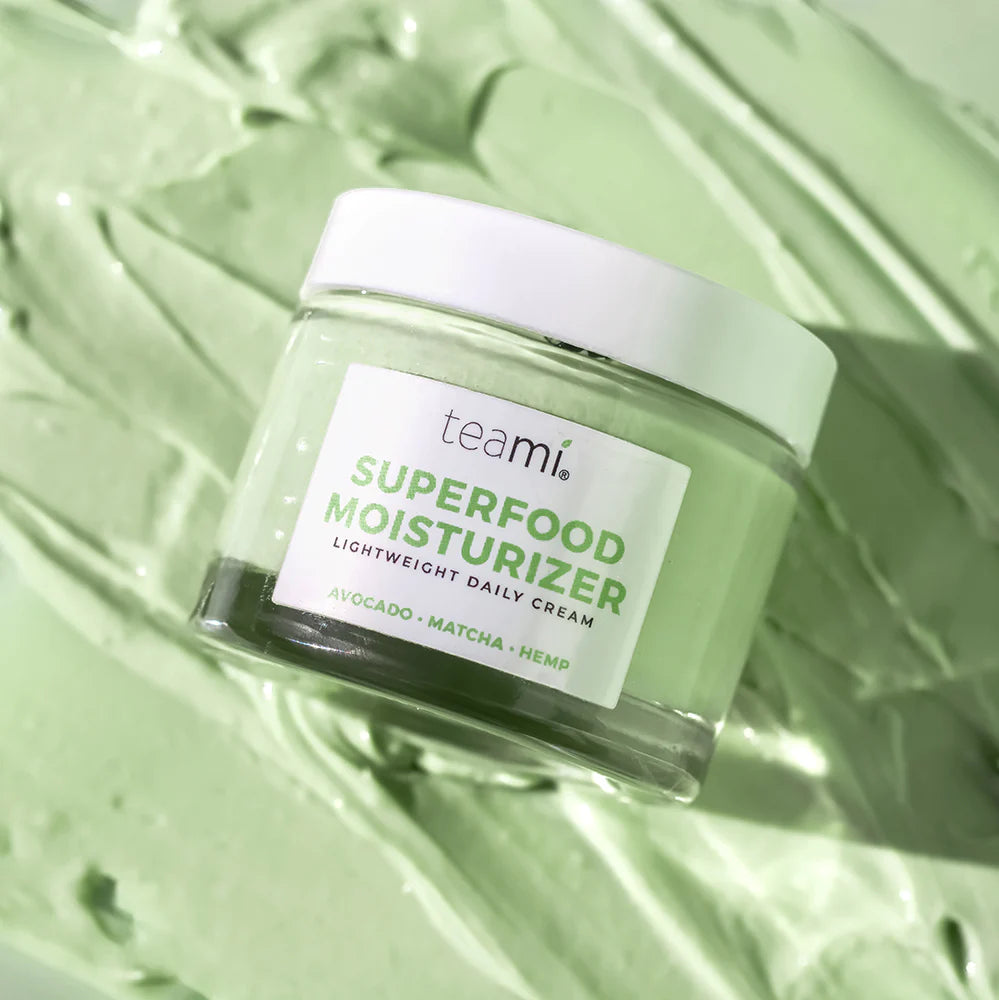[Guide] List of 4 DIY Face Mask Ideas That Actually Work

Maintaining a healthy complexion is difficult enough, but maintaining the complexion on our faces is even more challenging. Our faces are one of the most sensitive parts of our anatomy since they are the first thing exposed to our environment. Several hazards can impact the health and appearance of our skin, though some are temporary issues.
Nevertheless, facial skin requires a special level of care compared to thicker areas of our dermal layer. Fortunately, this has spawned a massive industry dedicated to cosmetic and health improvements for the skin. Several cosmetics companies have produced several products designed to protect our visage.
Unfortunately, most of these products are extremely expensive or use harsh chemicals as the core ingredients. One of the main products guilty of this is the face masks sold by multiple cosmetics companies.
Face masks are often employed to rejuvenate the skin and restore our youthful visage, but most of the products on the market are cost-prohibitive or use shady ingredients. This has led to a surge of "do-it-yourself" remedies using readily available natural ingredients. This has allowed people to begin taking care of their skin on their own terms rather than relying on major cosmetic companies.
This is not to say there are no worthwhile ready-made products, but that making your own face mask can be an effective alternative. The problem is figuring out which face mask recipes work since some are based on anecdotal experience rather than scientific evidence. Therefore, it is best to find a face mask idea that can actually work.
#1: Bentonite Clay Mask
This might sound strange considering the history of clay, but a clay face mask can benefit your complexion. Before you go running to the nearest crafts store, we should specify that only particular types of clay can help your skin. Clay comes in many forms and is derived from several minerals that exist worldwide.
Insofar as skincare is concerned, one of the best clays to use is bentonite clay, derived from the claystone bentonite (hence the name). Bentonite clay has been used for several purposes in industrial and repair fields but also has a place in cosmetic health. Bentonite is valuable because it is derived from volcanic ash, which is not easily acquired, given the rarity of safe volcanic biomes. Nevertheless, bentonite clay has become a very popular addition to many face masks because of its benefits for the skin.

Some research has looked into the health benefits of clay, especially concerning the skin. The research focused on bentonite clay since it seems to have some of the best potential as a health and cosmetic aid. The research has identified that bentonite clay is capable of the following:
- Reducing excess moisture of the skin.
- Protecting the skin from toxins.
- Reducing acne.
- Mitigating the symptoms of dermatitis.
- Mitigating the symptoms of diaper rash.
Bentonite clay is also known for purging toxins from the body, thereby minimizing bacterial colonization and dirt buildup. It also ensures toxins corrosive to the skin are a little less effective. Bentonite has also been used to treat poison ivy exposure, neutralizing the toxins that elicit the rash and itchiness for which the plant is known.
As a result, bentonite clay can be a very effective addition to several face masks since it can remove unnecessary moisture from the skin and help treat any toxins you might have been exposed to throughout the day. Unfortunately, these traits are ineffective enough to serve as a standalone mask, and bentonite clay can be difficult to acquire. You might have to use another clay in your face mask if you intend to use it at all.
#2: Kaolin Clay Mask
Bentonite clay is not the only variation that has earned a name for itself in the cosmetic industry. Another popular cosmetic clay is kaolin clay, derived from kaolinite, a clay-rich mineral from China that has earned it the pseudonym "China clay." Despite the name, kaolin clay is shipped worldwide, especially in the industrial sector, where it is used as a raw material.
Despite kaolinite being used in industrial or commercial settings, it has also developed an interesting reputation in cosmetics. Specifically, clay derived from kaolinite has been used for dermal rejuvenation and health, turning it into an ingredient in certain face masks. Kaolin clay masks are alleged to have multiple beneficial properties that make them a rival to bentonite masks. However, you are probably more interested in the alleged benefits rather than conjecture.

One detail that has made kaolin clay a popular choice is that it is significantly gentler than other types of clay. This gentle nature means it is less irritating to the skin when used frequently but offers an additional cosmetic effect. Kaolin clay's composition means it can be used as an exfoliant that opens your pores and allows your skin to breathe again. Exfoliation removes dead skin cells from the dermal layer, meaning they are not contaminating or polluting the pores. This reduces the risk of inflammatory rashes and acne breakouts, though exfoliation is only one component of this clay's abilities.
Kaolin clay has mild anti-inflammatory and antibacterial effects that compound with its exfoliating effect. This means kaolin clay can counter bacterial colonization or inflammatory substances that might irritate the skin or cause acne breakouts. Unfortunately, kaolin clay does have one restriction that limits who can use it.
People with dry skin should avoid kaolin clay since it can excessively dry the skin and promote irritation if it is already dry. Otherwise, kaolin clay can be a very beneficial ingredient in a face mask and is worth considering. That said, it has the same weakness as bentonite clay in that it is insufficient as a standalone ingredient and must be mixed with other substances.
#3: Green Tea Mask
When people hear the term "green tea," they assume you are talking about a drink, which is reasonable since that is the most popular application. However, green tea has also become a holistic tool known for its health and cosmetic benefits. As a result, the leaves of Camellia sinensis (the shrub from which green tea is made) have been converted into several products to fit those roles.
Countless green tea products on the market are advertised for various purposes, including skincare. Tea leaves can be tricky to acquire, but if you can get the raw material, you can add green tea to your face mask. The question of the hour is: how does green tea help rejuvenate the skin? Fortunately, green tea has been thoroughly researched for its benefits for health and appearance.
One of the biggest selling points for green tea cosmetic products is that a 2016 study revealed a high epigallocatechin-3-gallate (EGCG) concentration in the leaves. EGCG is a polyphenol that has been linked to a myriad of benefits for our health, making it a highly sought-after substance. EGCG has anti-inflammatory, antioxidant, and antimicrobial properties, making it highly capable of addressing certain skin issues.

One of the main uses of EGCG is the reduction of sebum (oil) levels on the skin. While we need sebum to keep our skin hydrated, excess amounts can promote higher rates of acne breakouts. EGCG has been scientifically linked to reduced sebum levels because it inhibits the production of androgens (the hormone responsible for sebum production).
Green tea has also been linked to the rejuvenation of the skin, allowing it to reduce the effects of aging on your face moderately. Maintaining a youthful appearance is one of the main purposes of face masks, and studies have shown that people who used green tea extract on their skin showed reduced levels of age-related skin damage compared to the placebo group. Green tea is also known to hydrate the skin and restore general health, likely reducing age-related damage.
This is not to say green tea is a miracle cure for aging, but it can help you preserve a degree of youthfulness as your skin undergoes natural changes. Adding green tea extract to your face mask can help generate those effects and improve its efficacy. With that in mind, there are other tools you can use to yield equally beneficial properties.
#4: Butterfly Pea Tea Mask
Like the previous section, this tea can benefit our health and appearance. Unlike green tea derived from C. sinensis, butterfly pea tea is distilled from the petals of Clitoria ternatea, or the butterfly pea flower. Despite the interesting species name, C. ternatea is a frequently used flower tied to several holistic traits. The refinement of the butterfly pea flower into tea is not a new concept, but it has only recently become popular in Western countries like America.
The C. ternatea flower is usually identified by its unique blue color, which impacts the tea it is distilled into. Butterfly pea tea takes on an attractive bluish-purple shade that has turned it into something of a phenomenon in certain circles. Despite that, the benefits associated with consuming butterfly pea tea (or applying its extract to your skin) have become well-known.
Butterfly pea flowers have become common in certain skin and hair products, like shampoos and hair mists. One of the main benefits of C. ternatea is that it can supposedly promote healthier hair. Ultimately, the main benefit lies in what it can do for your skin since it can improve skin hydration by 70%. This was confirmed in a study where butterfly pea flower extract was administered topically, and the hydration of the subjects' skin showed improvement within an hour.

The butterfly pea flower's skincare benefits appear to be because of its concentration of antioxidants. Antioxidants reduce oxidative damage to body parts and organs that could result in physical manifestations of the damage. That said, the research into butterfly pea flower's benefits for skin and hair is still in its youth, and more studies are needed. Fortunately, the initial results are so promising that it has become a common tool for those looking to improve their cosmetic health.
While there are not many, some people have begun using C. ternatea extract to create face masks and employ its antioxidant effects to rehydrate their faces. This same principle can be applied to your own DIY face mask since the extract is obtainable. If you are dealing with dehydrated skin, butterfly pea tea extract might be an essential addition to your recipe. There are other viable ingredients for face masks and other cosmetic products, but these 4 are the best choices for all-natural ingredients. Unfortunately, making your own face mask can be difficult unless you have previous experience with DIY cosmetics.
Fortunately, these DIY ingredients are popular enough to have earned a spot in certain lesser-known markets.
Finding the Right Blend
Face masks are commonly employed in beauty and skincare regimens, especially for women. Nevertheless, readily available products are not always ideal for the average user since some use artificial ingredients to improve the effect. Creating a DIY face mask with natural substances might be preferable for people who want to avoid synthetic cosmetic products.
Using the right clay or tea can make your face mask more effective by addressing the common issues that affect our facial skin. Unfortunately, making a face mask yourself might be challenging if you have never done it before. This means people without experience might need to buy a premade face mask despite any desire to avoid chemical ingredients. Fortunately, there is still an option that takes advantage of the options discussed here.

We at Teami maintain that natural ingredients are the best tools to improve cosmetic health. That is why we have created a catalog of products that use natural ingredients designed to address almost any issue. Insofar as face masks are concerned, we can offer our Green Tea Detox Mask (made with green tea and bentonite clay) or our Beauty Mask, Restorative Clay Facial (made with butterfly pea flower and kaolin clay).
Our face masks can help circumvent the issues with commercially available face masks without learning to create one from scratch. We encourage you to visit our website and pick the face mask you feel suits your needs. After all, finding the right blend is a Teami effort.
Subscribe to our Newsletter
Subscribe to our newsletter and get 10% off your first purchase
 Instagram
Instagram



